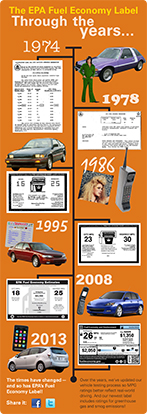Carbon Pollution from Transportation
Transportation and Climate Change
Burning fossil fuels like gasoline and diesel releases carbon dioxide, a greenhouse gas, into the atmosphere. The buildup of carbon dioxide (CO2) and other greenhouse gases like methane (CH4), nitrous oxide (N2O), and hydrofluorocarbons (HFCs) is causing the Earth’s atmosphere to warm, resulting in changes to the climate we are already starting to see today.
Greenhouse gas (GHG) emissions from transportation account for about 28 percent of total U.S. greenhouse gas emissions, making it the largest contributor of U.S. GHG emissions. Between 1990 and 2022, GHG emissions in the transportation sector increased more in absolute terms than any other sector.
EPA Programs to Reduce Carbon Pollution from Transportation
EPA is addressing climate change by taking the following actions to reduce GHG emissions from the transportation sector. Many of these programs have benefits beyond cutting carbon. For example, decreasing fuel consumption can reduce our dependence on foreign oil and save consumers money at the pump.
Setting GHG Emissions Standards for Cars and Trucks
EPA and DOT issued a joint rule-making that set GHG emissions and fuel economy standards for the largest sources of greenhouse gases from transportation, including cars, light trucks, and heavy-duty trucks.
- Cut 6 billion metric tons of GHG emissions over the lifetimes of the vehicles sold in model years 2012-2025 and allowing manufacturers flexibility in meeting the standards;
- Nearly double the fuel efficiency while protecting consumer choice; and
- Reduce America’s dependence on oil and provide significant savings for consumers at the pump.
- Reduce CO2 emissions by about 270 million metric tons over the life of vehicles built under the program, saving about 530 million barrels of oil; and
- The proposed “Phase 2” program includes standards that would further reduce GHG emissions and improve the fuel efficiency of medium and heavy-duty trucks.
- Regulations for GHG emissions from passenger cars & trucks (light-duty)
- Regulations for GHG emissions from commercial trucks & buses (heavy-duty)
- The Automotive Trends Report (formerly the Manufacturer Performance Report)
- Analyses and reports for setting GHG emissions standards for cars and trucks
Increasing the Use of Renewable Fuels
Congress created the Renewable Fuel Standard program in an effort to reduce greenhouse gas emissions and expand the nation’s renewable fuels sector while reducing reliance on imported oil. Renewable fuels are produced from plants, crops and other biomass, and can reduce greenhouse gas emissions when compared to burning the fossil fuels they replace.
Taking First Steps to Set a Greenhouse Gas Standards for Aircraft
EPA along with the Federal Aviation Agency at the United Nations' International Civil Aviation Organization have developed international carbon dioxide emissions standards for aircraft. EPA is also now working through the process of potentially setting domestic regulations under the Clean Air Act that address GHG emissions from certain classes of engines used in aircraft.
Greening the Federal Fleet
The 2007 Energy Independence and Security Act requires federal agencies to only acquire cars, light trucks, or medium-duty passenger vehicles that are low greenhouse gas emitting. Each year, EPA evaluates the greenhouse gas emissions performance of the fleet to determine which vehicles in each class emit less harmful greenhouse gases. The law requires federal agencies to purchase these high performing vehicles. Over time this will result in a greener federal fleet.
Reducing Greenhouse Gas Emissions Associated with Moving Goods
SmartWay helps the freight transportation sector improve supply chain efficiency, reducing greenhouse gases and saving fuel costs for companies who participate. Through SmartWay, EPA and its partners are making significant gains in the efficiency of how our nation moves goods, helping address air quality challenges, improving public health and reducing freight’s contribution to climate change.
Informing Consumers Information on Fuel Economy and Advanced Technology Cars
Since the mid-1970s EPA has required automakers to display a label on new cars and light trucks with information on vehicles' fuel economy and fuel costs. Labels on today's cars also include ratings on greenhouse gas and smog-forming pollutants. EPA provides online resources, such as the Green Vehicle Guide and the joint EPA-DOE website fueleconomy.gov, to help consumers identify vehicles that can save them money at the pump and reduce their transportation-related emissions.
EPA’s SmartWay light duty program goes further and identifies the top performing vehicles in terms of fuel economy and emissions to assist consumers in making an environmentally friendly purchase.
State and Local Transportation Resources Center
For information on emission reduction strategies, national policies and regulations, incentive-based and voluntary programs, funding sources, calculators, transportation conformity, and other types of assistance to help states and local areas achieve their air quality and transportation objectives.
The Road Ahead
While transportation continues to contribute a large percentage of U.S. emissions, there are many opportunities for the sector to deliver greenhouse gas reductions. Low-carbon fuels, new and improved vehicle technologies, strategies to reduce the number of vehicle miles traveled, and operating vehicles more efficiently are all approaches to reducing greenhouse gases from transportation.

